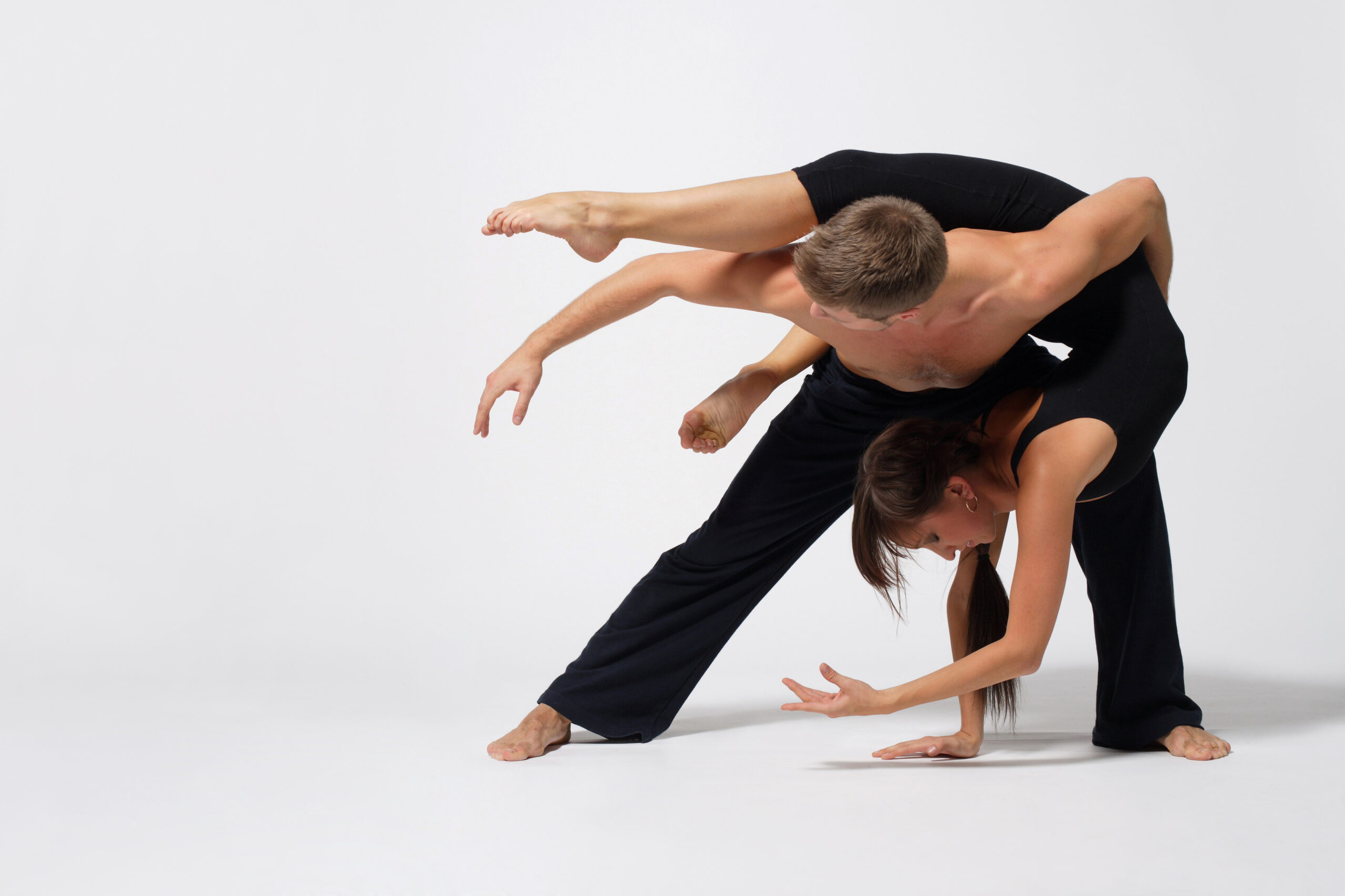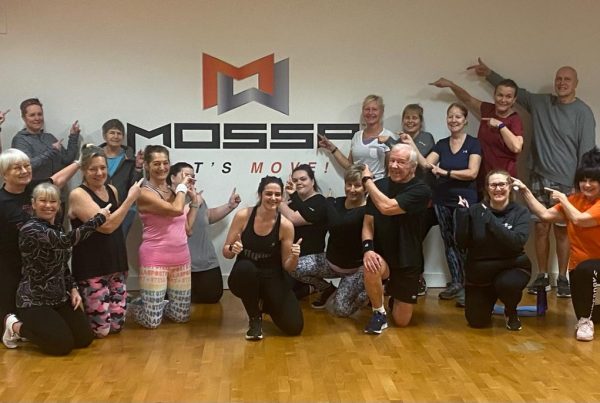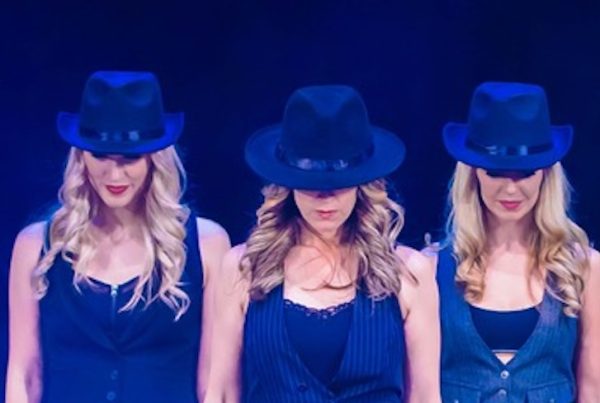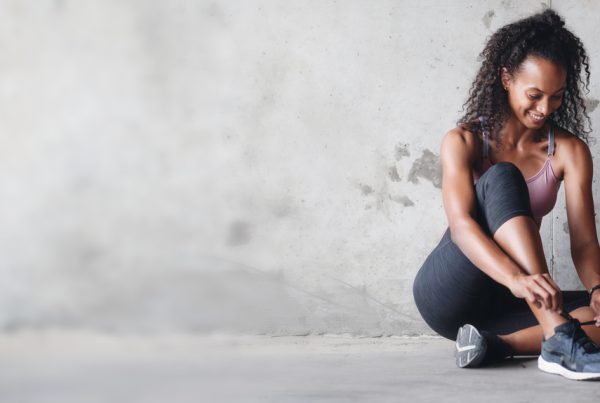Dance posture requires more aesthetic energy and presence than relaxed standing, and so generally involves more muscle activation. The body dynamically changes its position in multiple planes. Skilled dancers need to manage their dynamic alignment and return to neutral quickly, preserving the body’s natural integrity (1). If a body is able to assume good basic alignment, then stylistic preferences can be overlaid on this foundation (2). Different styles may require aesthetic adjustments to the neutral base. In each style, the most efficient way of performing the vocabulary should be identified. If dancers or dance leaders are not aware of ways in which their genre-specific placement can be safely achieved and if, or how, it may deviate from recommended neutral alignment, then they will not be able to regulate its effects. All dance practitioners need to understand how forces are distributed through the body in their own style. Providing detailed descriptions on the appropriate alignment in every possible dance style is beyond the scope of this article, but some examples in this section will help to identify many common alignment issues with reference to possible physical deviations from the norm.
For example, some flamenco schools ask for greater lift and arching of the upper back. Other styles, such as classical ballet and jazz, regularly use deep back bends. Each time the spine is extended in this way, the pressure in the rear of the intervertebral discs increases, and the facet joints in the spine are subjected to compressive forces (3). Styles that require sitting on the floor, such as Graham technique and some jazz vocabulary, present specific challenges for alignment: The pelvis needs to maintain an erect orientation to lift the spine and prevent pressure on the discs because of excessive flexion of the lumbar and thoracic regions (1). Other modern or contemporary styles (including Release and Flying Low) incorporate a developed use of the floor for support and inversion, quite literally turning normal alignment on its head, and require a development of upper body strength and alignment to move effortlessly between upright and upside down. Aerial or vertical dance and pole dancing require immense skill and control in defying gravity to extremes. Highly developed core stability and upper arm, forearm as well as finger strength are vital for maintaining safe biomechanical alignment. Break-dancing and hip-hop styles, in which the whole body weight is bearing down into the hands and wrists or even the head and neck, require significant amounts of strength in the muscles supporting these joints for distributing the loads and forces safely, not to mention an excellent ability to appreciate and control the unusual arrangements of body parts. In Irish dance, maintaining the upright posture is stylistically very important. The torso and arms need to remain stable but relaxed while the lower limbs complete fast, explosive and intricate movement. In order to achieve and maintain the posture, the core muscles must be strong and controlled. Similarly, tap dancers move their legs and feet at speed while holding their pelvis in balance. Belly dance might require increased elevation in the ribcage, and some African and jazz styles require an arch of the lower back, which could place added strain on the lumbar spine over time (1). Other tribal fusion styles might encourage lengthening of the lumbar spine, which could be misinterpreted as tucking if instruction is not clear. Zumba is a form of dance exercise that emphasises fitness and fun, but in this practice, it is important to keep the back straight, with support from the abdominals, to maintain a neutral spine and, in the deeper squats, observe hip and knee alignment.
Dance Styles
Partner work in many traditional, social and competitive styles (such as ballet, ballroom, dance sport or tango) relies on individuals having a good awareness of alignment. In addition to this, the partnership has its own structural relationships that may need each dancer to veer from their own biomechanical security. Partner dancing is not necessarily symmetrical in a single body, but through two bodies joined through a base and frame; therefore weight balances and distribution may be different to normal (4). Techniques might be partner or gender specific. For example, there are many styles of competitive dance sport, with modern and Latin variations. A common trait in modern styles is for the female dancer to keep her upper body and head placed slightly back and left and to slightly elevate her arms and hands to correctly hold her frame. Researchers have found that the isometric contractions with a constant force output required for maintaining these positions through long hours of competition can lead to very specific neck injuries (5). Similarly, lifting techniques in ballet pose a risk for the male partner due to the lumbar stress forces, especially at the beginning of the lift as his partner leaves the ground. Dancers learning lifting and partnering combinations must rehearse carefully to ensure the correct positioning and distance from the partner (6)
When performing lifts, dancers need to understand how they align efficiently with each other to minimise the effects of increased forces through their connected bodies.
The point of these few examples is to highlight the diverse range of alignment requirements and to emphasise that safe practice in these styles requires appropriate training guidance. This will not be a problem for vocational and professional dancers who immerse themselves in their style and can securely embed the necessary technical directions. However, this must be taken into consideration in recreational settings if different forms of dance are experienced with less training and preparation. Similarly, even professional dancers who attempt new styles that are unfamiliar without adequate preparation could succumb to injuries due to different alignment requirements.

The next section deals with specific areas of the body and discusses the effects of deviations from recommended alignment. Before moving on, it is worth mentioning the issue of hypermobility because many of the deviations described refer to it. When a dancer has excessive range of motion at a joint (that is, beyond the normal range of motion), they are said to be hypermobile. In lay terms, this is sometimes called being double-jointed. It can often be seen as advantageous or aesthetically pleasing in some dance styles. Dancers can have individual joints that are hypermobile—it is not simply a matter of being completely loose. In effect, most dancers could be termed hypermobile because of their increased flexibility in relation to the general public, but the hypermobility seen in the dance population is usually more extreme. Healthy joints need a combination of flexibility and stability. With hypermobility, the supporting connective tissue (the tendons, ligaments and fascia) is less stable, leaving the joint more prone to injury. Dancers with this condition need careful training with knowledge and understanding of appropriate joint use and potential (7). While stretching is important for all dancers, less emphasis on flexibility in both regular dance work and supplementary activities will help dancers with hypermobile joints to focus on training goals that encourage gains in strength and stability to control their range of motion.
Professional ballet dancers are often cited as examples, but some emerging street styles also require specific hypermobility. ‘Bone-breaking’ involves extreme distortion of the body and requires flexibility that very few recreational dancers will be able to achieve. Dancers attempting to learn this type of style through word of mouth or Internet tutorials should carefully heed any safety advice.
Being extra flexible is not always an advantage, even in the dance population where good flexibility is an asset. Dancers with hypermobile joints may need additional strengthening work to stabilise the body and avoid injury.
Lower Body: Feet and Knees
The body’s whole weight is distributed through the feet, ideally equally supported by the heel and the forefoot. The balance of weight is usually described as falling through three points of contact with the floor: the first and fifth toes and the heel, more specifically, the head of the first metatarsal, the head of the fifth metatarsal and the centre of the heel (the tuberosity of the calcaneus) with the toes spread and relaxed on the floor for balance rather than clawing to maintain a grip (8) . A useful image to use here is that of the tripod. Dance leaders can direct dancers to consciously distribute the weight evenly through the feet (see figure 2.6).
Some dance styles (for example, ballet and jazz) require the weight to be shifted forwards slightly towards the balls of the feet. Often teachers will direct their dancers to be ‘up on their feet or legs’ or feeling ‘ready to go’. It is reported that the use of the fully turned-out position of the legs supports and encourages a forward weight shift, consequently increasing mobility in the hamstrings, calf and back muscles. However, recommendations are that until young dancers develop adequate turnout, their teachers must not allow them to displace too much weight forward (9) If the heels lose contact with the floor, there is an increased possibility of hyperextension in the knees and spine and increased stress in the metatarsals and balls of the feet, as well as for the plantar flexors, which could contribute to the incidence of shin splints (10)
Correct knee alignment refers to the orientation of the kneecap (patella) and its relationship to the toes (or more specifically, to the second toe). In both parallel and turned-out dance positions, the dancer is directed to ensure that the knee maintains a straight line over the second toe, that is, the lower leg bones (the tibia and fibula) are in the same plane as the thigh bone (femur). An alternative cue would be to ‘bring the toes under the knees’, a direction that limits the likelihood of the dancer simply forcing the knees out to the sides. In the turned-out position, to avoid the dancer misinterpreting this cue by simply turning in more at the hip joint, the teacher should also encourage full access to the dancer’s available turnout.
Common Lower Body Alignment Issues
Feet: Flat or excessively arched
Toes: Claw toes, hammer toes and hallux valgus (leading to bunions)
Knees: Knock knees, bow legs and tibial torsion
Swayback legs (knee joint).
The longitudinal arches of the foot (both the medial and lateral that run along its length) should be in a neutral position in both bare feet and shoes, that is, with the weight evenly distributed along the central axis. Dancers who stand or work with the weight on the inside (medial) border of the foot are in effect flattening the longitudinal arch, pronating the foot, which is usually described as ‘rolling in’. Less common is when the dancer stands or works with the weight shifted to the outside (lateral side) of the foot, lifting the arch, termed supination or ‘rolling out’. Observing the Achilles tendon from the back view of the body can assess the extent of the roll. If the tendon curves in towards the centre (medially), then the dancer is rolling in; if it curves outwards (laterally), then the dancer is rolling out. When the foot is pronated but not weight bearing, it is usually termed winging. The non-weight-bearing supinated foot is termed sickling.
The function of pronated and supinated foot and ankle positions becomes apparent in motion; the relative positioning of the bones of the feet make the foot more or less stable. The more anatomically stable position (supination) is needed in propulsion for running or jumping and the more anatomically flexible position (pronation) allows dancers to adapt to uneven surfaces (1). This happens naturally in efficient movement mechanics, but too much movement in either direction contributes to stress on the joint and potential injury (2). For example, if there is too much strain on the outside border of the foot when landing from jumps, this can overstretch and damage the external lateral ligament. Problems occur when the dancer has a specific structural foot deviation, or simply technically cannot control pronation or supination. It also happens when particular dance moves encourage weight bearing in these positions.
Several variations in foot structure affect the dancer; these are often not possible to change. When the inside border of the foot flattens, causing excessive pronation, this is termed pes planus, commonly known as flat feet. Although this type of foot may benefit from increased shock absorbency, there is also some evidence that it increases the risk of injuries such as shin splints, plantar fasciitis and metatarsal stress fractures (1) . Flat feet can be congenital, but excessive strain from dancing without adequate strength in the muscles of the foot can also cause fallen arches (8). The opposite is the excessively high-arched foot, or pes cavus, a rigid foot type that is not fully able to accommodate shock-absorbing pronation. This type of foot is often aesthetically appreciated in dance, but it is susceptible to injuries such as stress fractures, plantar fasciitis and metatarsal problems (11)
Other common foot alignment problems for the dancer are claw toes and hammer toes, in which the different joints in the toes are in permanent hyperextension or hyperflexion, respectively. Hallux valgus, where the big toe is displaced towards the outside of the foot, makes the joint at the first metatarsal head more prominent, leading to altered biomechanics and friction that can encourage the formation of bunions (1) . These problems can instigate disturbances in balance and stability (8). Some conditions are genetic, but others can be caused or exacerbated by poor dance technique. Teachers can encourage foot and ankle strengthening exercises as both a preventive and rehabilitative measure and can point out weight-bearing issues to focus the dancer’s attention on correct alignment. The importance of correctly fitting footwear to help prevent these conditions should be stressed.
Each dance style uses different and often unusual positions of the feet, especially in specialised footwear such as high heels (discussed later on), Irish dance shoes or ballet pointe shoes. The foot is susceptible to excessive pronation or supination in pointe work, and this can amplify the potential for injury (9) . While the sickled foot in ballet arabesque is often seen as an aesthetic benefit that enhances the line, the sickled foot in weight bearing on pointe is dangerous because the precarious balance predominantly on the big toe joint forces the ankle to fall inwards. The skilled ballet dancer must be able to understand the value of this ankle joint movement so that it is used only in gesturing.
As with the winged foot, the hyperextended knee joint can be seen as aesthetically desirable in leg gestures. Hyperextension of the knee (genu recurvatum) is often seen in dancers. It is also known as swayback legs because the legs appear to be curving backwards. The knee joint is straightened beyond the usual 180 degrees so that the weight of the body is no longer transferred through the centre of the joint, stretching the ligaments and affecting knee stability. This is particularly dangerous when landing from jumps. Hyperflexion of the knee (genu antecurvatum), when the knee appears to be slightly bent, may be due to muscular and soft tissue restriction as well as or instead of joint mechanics. If this is the case, careful stretching (for example, of the hip flexors) may produce changes (1). This condition may not be frequently seen in training or professional dancers, but it can be more common in the recreational dancer.
The knee must be stable in both flexed and extended positions. When the knee is flexed, the collateral ligaments are relaxed, allowing a small amount of rotation to take place, so that the side-to-side stability of the knee becomes fully dependent on the supporting action of the surrounding muscles (9) When the knee straightens, in the last 20 degrees of extension, the muscles and bones work together in a complicated process known as the screw-home mechanism, the point at which the medial and lateral condyles of the tibia naturally lock the joint, tautening the collateral ligaments (12)
Dancers who push the knees backwards into hyperextension will reduce the stability of their knee joints, and dancers who do not fully straighten their knees when necessary will not allow the collateral ligaments to do their job efficiently. Cues given by teachers regarding how much to straighten the knee can be confusing for the dancer. Advice such as ‘do not lock the knees’ or ‘keep the knees soft’ are not particularly useful in supporting the necessary muscle activation to support a more effective alignment. The difficult job for teachers is to guide the dancer in finding the most appropriate use of muscle tension to pull up the front of the thighs and kneecaps, rather than pushing them back, while avoiding muscular overwork and gripping. A co-contraction of the hamstrings and quadriceps femoris could prove effective in this case (1). Dancers with hyperextended knees tend to work with their heels apart in (ballet) first position, which actually can make things worse. Teachers should not direct these dancers to immediately force the heels together, since this is difficult to control, and may spark other problems. Instead, teachers should encourage dancers to gradually bring the heels together over time in order to build the necessary strength for maintaining the position.
Solutions for Hyperextended Knees
Rather than thinking of pushing the knees back when straightening the legs, the dancer can instead be directed to pull the knees straight up.
Pulling up just below the back of the knee at the same time as the front of the knee can encourage a co-contraction of the hamstrings and the quadriceps femoris (the antagonistic pair of muscles), reducing the tendency to clench the quadriceps.
As the dancer’s own perception of straight is often distorted, using a mirror initially might help the dancer to understand how their sensations relate to the visual corrections.
(Clippinger, 2007; Grieg, 1994)
Dancers with various other misalignments of the knee have difficulty, first because deviations here are subject to increased stresses and forces in many usual dance movements, and second because they are aesthetically less desirable. Dancers with tibial torsion have bowing or twisting along the length of the tibia. This manifests itself in a dancer whose lower legs bend outwards when standing in parallel position, causing more weight to be borne on the inside of the foot because the knees fall inwards of the plumb line. Its appearance is similar to but not the same as internal rotation of the knee joint, when the patella faces inwards. Tibial torsion is a distortion of the bone itself, and the teacher will not be able to correct this condition. Similarly, knock knees (genu valgum) and bow legs (genu varum) are not correctable, although their appearance can be minimised, and adaptations should be made for dancers exhibiting these conditions. In knock knees, the knees fall forward of the plumb line, causing compression stress on the outside and tensile stress on the inside of the joint. In bow legs, the knees fall outside the plumb line, causing tensile stress on the outside and compression stress on the inside of the joint (13) Bow legs distort the line of the leg in parallel but are more stable than knock knees. Recommendations are that the dancer with knock knees should not be forced to stand in parallel with the feet touching, but instead stand with feet slightly apart to allow space for the knees (14) These dancers should also not try to bring the heels together in the turned-out (ballet first) position, but should be encouraged to emphasise external rotation at the hip joint (15)
This article is an extract from Safe Dance Practice by Edel Quin, Sonia Rafferty and Charlotte Tomlinson and has been adapted for online and reproduced with permission from Human Kinetics. To purchase the full text visit: https://uk.humankinetics.com/products/safe-dance-practice?variant=6028135563293
FitPro members: use discount code: FP25 at checkout!
References:
(1) Clippinger, K. (2016). Dance anatomy and kinesiology. Champaign, IL: Human Kinetics.
(2) Welsh, T. (2009). Conditioning for dancers. Gainsville, FL: University Press of Florida.
(3) Simmel, L. (2014). Dance medicine in practice: Anatomy, injury prevention, training. London, England: Routledge.
(4) Lamberty, R. (2011). Dancing posture. Retrieved from http://www.rounddancing.net/dance
(5) McCabe, T.R., Hopkins, J.T., Vehrs, P., & O’Draper, D.O. (2013). Contributions of muscle fatigue to a neuromuscular neck injury in female ballroom dancers. Medical Problems of Performing Artists, 28(2), 84-90.
(6) Alderson, J., Hopper, L., Elliott, B., & Ackland, T. (2009). Risk factors for lower back injury in male dancers performing ballet lifts. Journal of Dance Medicine and Science, 13(3), 83-89.
(7) McCormack, M. (2010). Teaching the hypermobile dancer. The IADMS Bulletin for Teachers, 2 (1), 5-8.
(8) Huwyler, J.S. (1999). The dancer’s body: A medical perspective on dance training. McLean, VA: International Medical Publishing.
(9) Grieg, V. (1994). Inside ballet technique. Hightstown, NJ: Princeton.
(10) Watkins, A., & Clarkson, P.M. (1990). Dancing longer, dancing stronger: A dancer’s guide to improving technique and preventing injury. Princeton, NJ: Dance Horizons.
(11) Conti, S.F., & Wong, Y.S. (2001). Foot and ankle injuries in the dancer. Journal of Dance Medicine and Science, 5(2), 43-50.
(12) Hamill, J., & Knutzen, K.M. (2009). Biomechanical basis of human movement (3rd ed.). Philadelphia, PA: Lippincott, Williams and Wilkins.
(13) Franklin, E. (2004). Conditioning for dance. Champaign, IL: Human Kinetics
(14) Sevey Fitt, S. (1996). Dance kinesiology (2nd ed.). New York, NY: Schirmer.
(15) Watkins, A., & Clarkson, P.M. (1990). Dancing longer, dancing stronger: A dancer’s guide to improving technique and preventing injury. Princeton, NJ: Dance Horizons.
If you liked this, you can listen to our podcast on how to improve your clients’ posture, here








